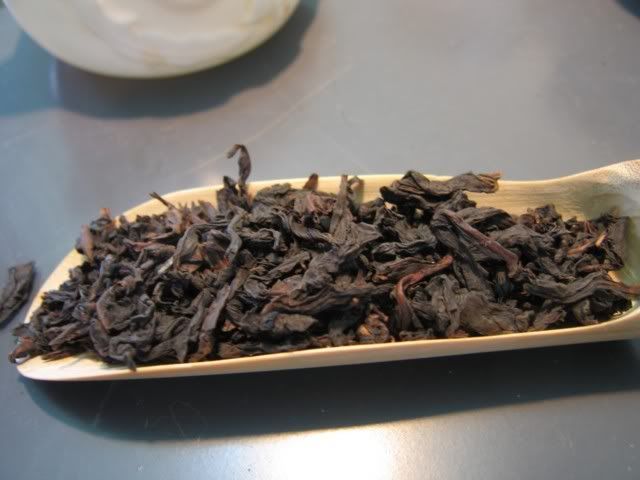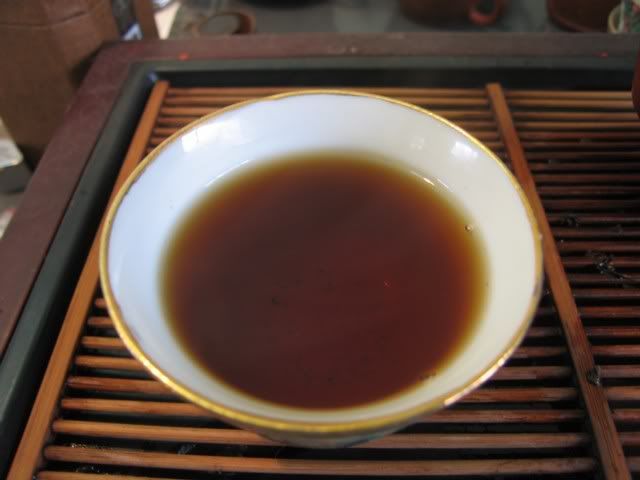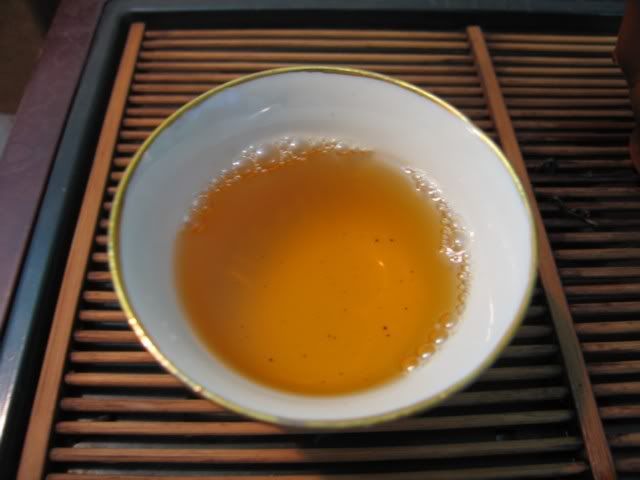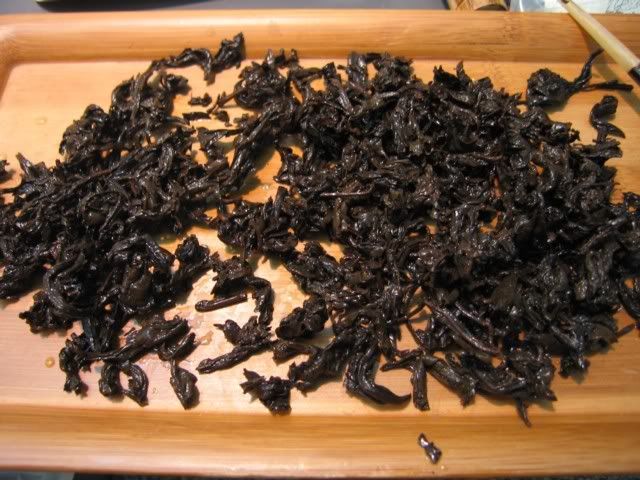Over time, I’ve bought a bunch of stuff that I thought were duds for one reason or another. Sometimes it’s stuff that are, basically, no good at all. Other times, it’s tea that should’ve been good that had somehow gone bad. Or, perhaps, I made them bad (say, longjing I bought three years ago… anybody want some?). Today’s tea was supposed to be one of them.
I had a few boxes of stuff that recently arrived via the slow boat from Taiwan. Among them, of course, are a bunch of teas. Some are good, some are ok, some are things that I didn’t want to throw away, but not really good at all. This is a qizhong (literally unusual varietal) of Wuyi mountains, bought from the candy store. It was one of my first purchases there. Their tieguanyin became one of my staple teas in Taiwan. This one, however, wasn’t so good — too sour.
So it was with some trepidation that I picked this up today to try. I figured maybe, just maybe, it won’t be that bad.
It looks pretty good dry, which was why I bought it in the first place

Smells old, although, now that my nose is a bit more trained, it also smells a bit sour. But I wasn’t quite good at telling that apart from the “old” smell before.
Into my old oolong (1 person) pot it goes

The second cup

The …. 12th? cup

The residue

Since I lasted 10+ cups, you probably figured out that the tea wasn’t that bad. It was, in fact, far better than I expected. There was some sourness at first, but by the third cup it was gone. The Wuyi “rock” taste was very strong, with a potent minty sensation down the throat. Aged, of course, and I couldn’t detect any sort of immediate roasting flavour. Nicely aged and mellowed… a winner. Even better without the initial sourness, but I can’t ask that much.
What changed?
Well, everything, really. First, the water. It’s a different water (not my Taiwan apartment slightly problematic water). Boiled in a different vessel (my cheap tetsubin instead of the glass kettle). Brewed in a different thing (a supposed zhuni pot instead of a gaiwan). Drunk in a different cup (my newest purchase instead of another cup). And of course, just halfway across the planet.
Which one was the one responsible for making this tea better? I don’t know, but I suspect water, water prep, and tea brewing vessel all did their share. Or, maybe, after all this time brewing old oolongs, I myself am also a little different, and a little better at this. Can’t complain.

 RSS - Posts
RSS - Posts
5 responses so far ↓
mulcahyfeldman // February 19, 2008 at 3:46 pm |
Interesting, all the parameters of brewing. How do you brew an old oolong as compared to a new one? How does brewing differ with a green oolong? Do you brew the rock oolongs differently?
MANDARINstea // February 19, 2008 at 8:09 pm |
you must be in a good mood ; )
mulcahyfeldman // February 20, 2008 at 1:20 am |
Can you explain the texture of the clay of your oolong pot?
MarshalN // February 21, 2008 at 9:49 am |
Hmmm, I’d say they are quite different, in terms of brewing parameters… although the difference is largely in the amount of leaves used and less so with time.
mulcahyfeldman // March 23, 2008 at 12:23 pm |
I’ve been thinking a lot about water since you’ve made various references to it in different entries. Evian is on your ‘do not use’ list but I read in Hobbes’ blog (last April I think) that he’s recommended it I think although he complained about its effect on his glass pitcher. The Japanese recommend using water with a hardness of about 50 for best effect. I think Evian is up there at maybe 150 so your advice is well-founded I think. Any comment?